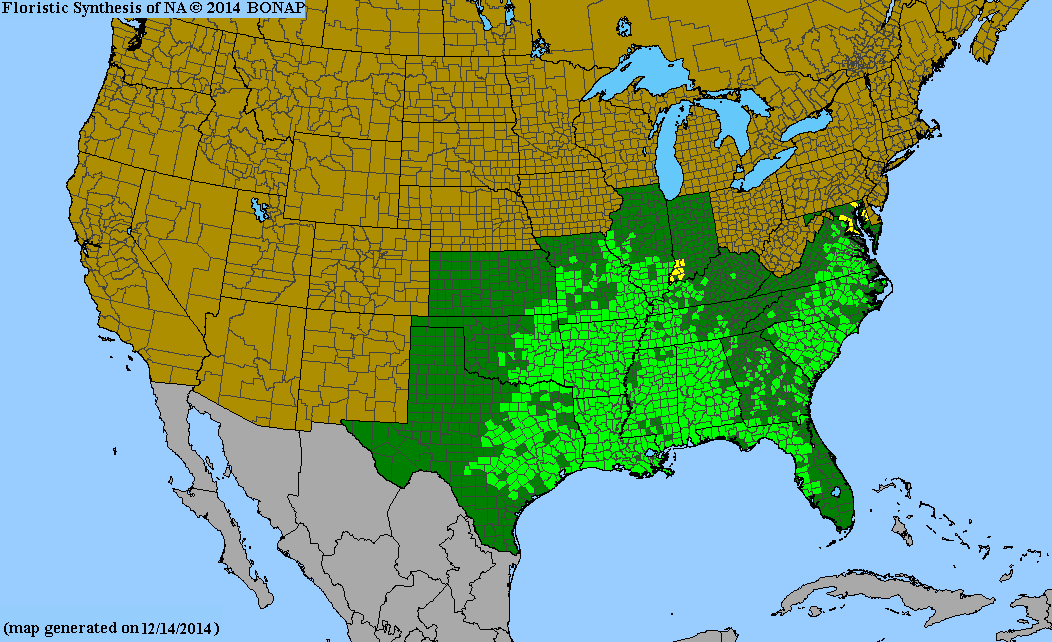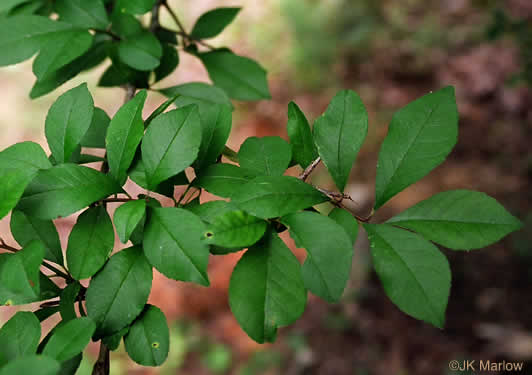Aquifoliaceae
possum-haw
Ilex decidua
Synonyms
Ilex decidua var. decidua
Other Common Names
bearberry
Plant Type
Small Tree/Large Shrub (10-25 ft)
Life Cycle
Perennial
Typical Size
7-15 ft. tall
5-12 ft. wide
Tolerant of
Occasional Flooding
Inolerant of
Dry Soil
Propagation
By seed
Plant Propagation Notes
Seeds require a double stratification of warm moist conditions for 30-60 days followed by a cold moist stratification of 60-90 days.
Plant Planting Notes
At least one male tree is needed for female fruit set. Prune in early spring before new growth emerges.
Plants/Diseases
Leaf spot and powdery mildew can be occasional issues.
Wildlife Benefits
Nectar/pollen source for pollinating insects, Fruit/seeds for birds
Leaves
Leaves alternate, elliptical to ovate with crenate margins.
Flowers
Small greenish white flowers with four to five petals.
Fruit
Bright red berries that persist in winter.
Bark
Bark is grayish silver.
Toxicity
Fruits have low toxicity if consumed.

USDA Hardiness Zones
5, 6, 7, 8, 9
Light Exposure
Full Sun, Part Sun/Shade
Soil Moisture
Moist
Soil Drainage
Well-drained
Soil pH
Acidic (less than 6.0)
Native in South Carolina?
Yes
Plant Native Habitat
Most typically found in floodplain forests, but may infrequently be found on upland slopes.
Global Conservation Status (NatureServe)
Secure (G5)
Federal Conservation Status (USFWS)
Not Listed
Distribution Notes
Common in the South Carolina coastal plain, sandhills, and piedmont. Absent from the mountains.

